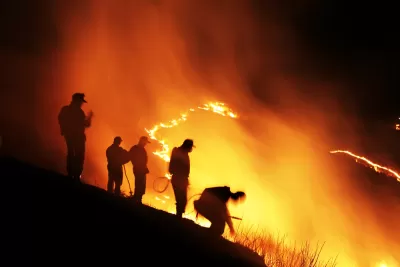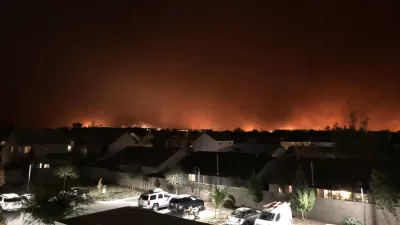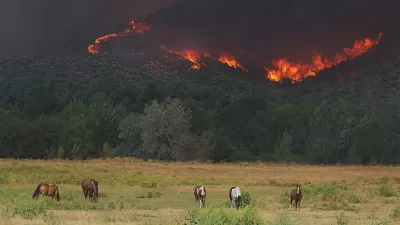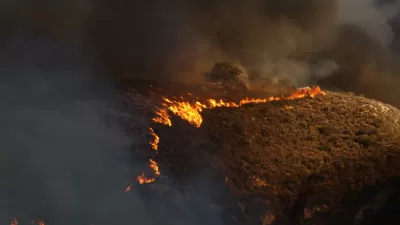The number of annual 'fire weather' days has increased over the past 50 years, leading to deadlier and more massive fires in the West.

A new study from the nonprofit Climate Central found that "fire weather" days–those characterized by the "hot, dry and windy weather conditions" that fuel wildfires–"have increased in frequency over the past 50 years," and will likely continue to do so, expanding fire season and posing increased fire risk. Maanvi Singh writes, "The study’s findings, based on data from weather stations across the region, are consistent with other recent research suggesting that in many parts of the West, increased temperatures from human-caused climate breakdown are leading to more parched summers." The study "found that the number of fire weather days increased steeply in parts of Texas and in California’s interior, and that southern Nevada, southeast California and swathes of New Mexico had the highest number of average annual fire weather days – with nearly a quarter of the year in some regions being characterized as having elevated risk."
In addition to weather, other factors drive the increase in massive fires: "the extreme drought gripping the west, as well as a century of fire suppression, has led to the buildup of dead trees and vegetation that has helped stoke some of the largest fires in region." Meanwhile, "[e]xtreme fire weather has in many cases made it more challenging for firefighters to respond to fire," and "[p]ower companies have begun to turn off electricity to residents in order to avoid equipment-related ignitions – leaving communities without power for medical equipment, refrigeration and, at times, air conditioning." As fire season gets longer and longer, residents must reshape their lives to adjust to the new normal.
FULL STORY: Fire season is getting longer

Maui's Vacation Rental Debate Turns Ugly
Verbal attacks, misinformation campaigns and fistfights plague a high-stakes debate to convert thousands of vacation rentals into long-term housing.

Planetizen Federal Action Tracker
A weekly monitor of how Trump’s orders and actions are impacting planners and planning in America.

San Francisco Suspends Traffic Calming Amidst Record Deaths
Citing “a challenging fiscal landscape,” the city will cease the program on the heels of 42 traffic deaths, including 24 pedestrians.

Defunct Pittsburgh Power Plant to Become Residential Tower
A decommissioned steam heat plant will be redeveloped into almost 100 affordable housing units.

Trump Prompts Restructuring of Transportation Research Board in “Unprecedented Overreach”
The TRB has eliminated more than half of its committees including those focused on climate, equity, and cities.

Amtrak Rolls Out New Orleans to Alabama “Mardi Gras” Train
The new service will operate morning and evening departures between Mobile and New Orleans.
Urban Design for Planners 1: Software Tools
This six-course series explores essential urban design concepts using open source software and equips planners with the tools they need to participate fully in the urban design process.
Planning for Universal Design
Learn the tools for implementing Universal Design in planning regulations.
Heyer Gruel & Associates PA
JM Goldson LLC
Custer County Colorado
City of Camden Redevelopment Agency
City of Astoria
Transportation Research & Education Center (TREC) at Portland State University
Jefferson Parish Government
Camden Redevelopment Agency
City of Claremont





























